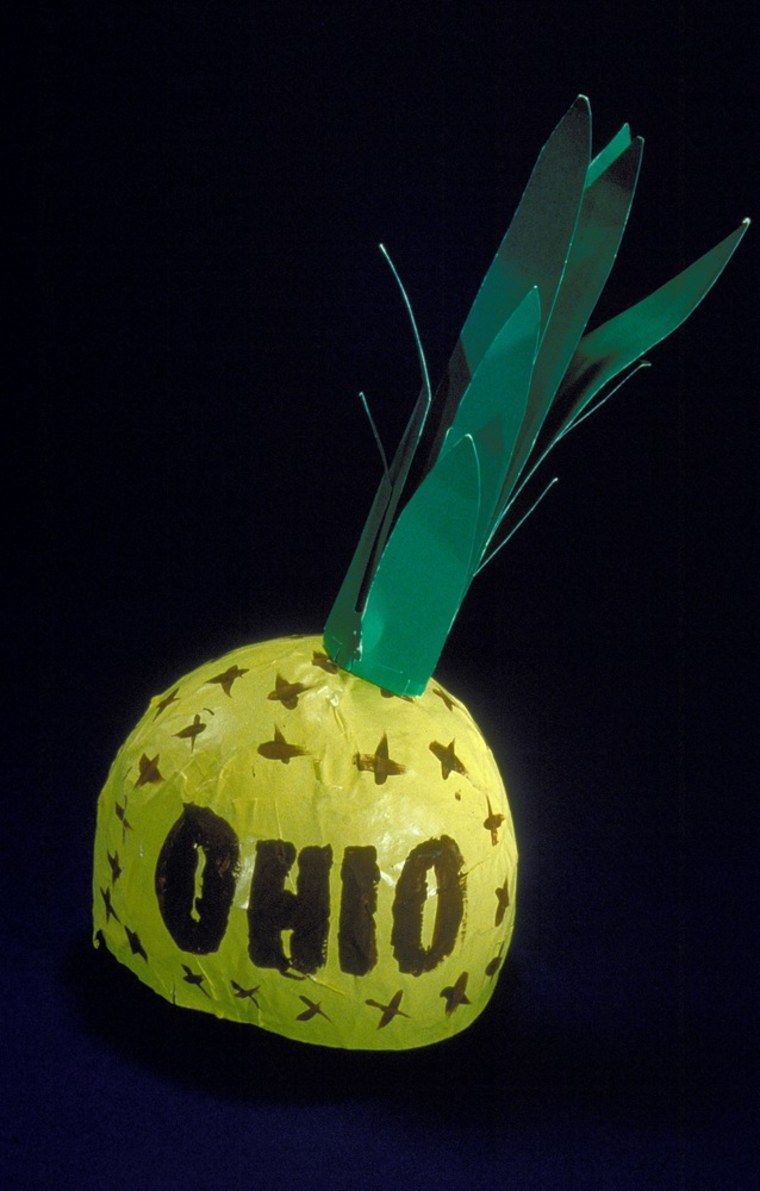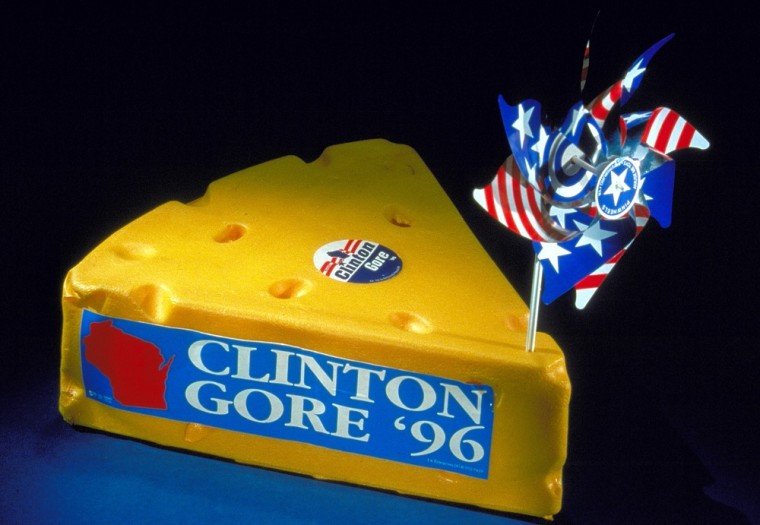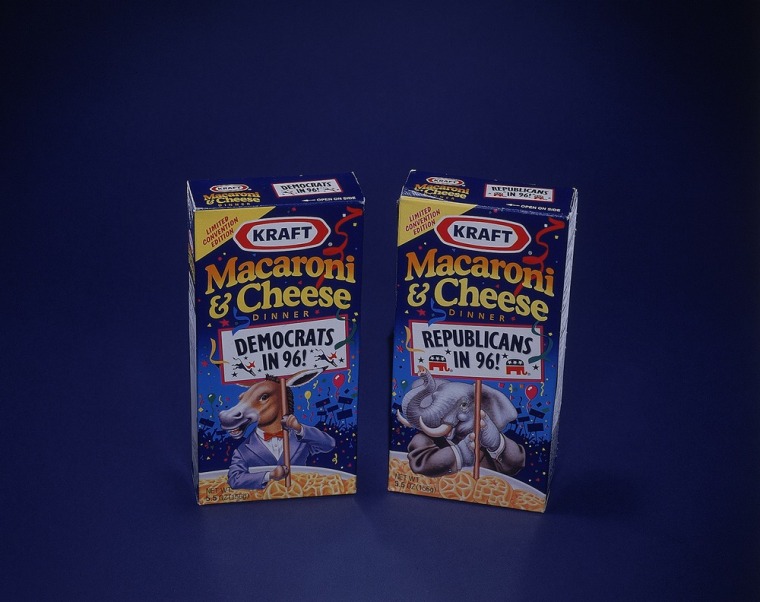Every four years for almost 25 years, the duo known simply as “Harry and Larry” have been regulars at the Republican and Democratic national conventions.
But Harry and Larry will not be participating in the political election process at this year’s gatherings. As curators of the Smithsonian’s National Museum of American History, division of political history, Harry Rubenstein and William Lawrence Bird will be quietly scouting the floors, trolling for modern-day treasures — buttons, banners, posters, signs, key chains, and other novelties — to document the 2012 presidential election.
The museum calls the political campaign collection “the largest holding of presidential campaign material in the United States,” and it includes some very old items, like the little brass buttons made for George Washington’s inauguration in 1789, and a wooden parade axe carried to support Lincoln, “the rail-splitter candidate” in 1860. (One side says “Good Times Coming Boys.”) “Click for Dick” Nixon noise makers, Clinton fly swatters and several types of Obama dolls and action figures are some of the modern-day memorabilia in the collection.
NBC News spoke with Harry and Larry recently about the collection and their experiences gathering materials for it. Here are some edited excerpts from that conversation:
How do people respond when they find out why you attend the conventions?
Harry: The reaction is often one of surprise. We’re the odd people out. There are thousands of delegates and campaign workers, thousands of news media, and all kinds of security personnel. Then there are the couple of us from the Smithsonian.
How do delegates react when you ask for their stuff?
Harry: It’s often difficult for them to give anything away at that moment. Sometimes they ask for contact information so they can call and check us out, and may send things to us afterwards.
Larry: It’s almost not fair to ask them. Items are hard to part with because they are often so meaningful.
Harry: For many of them, being a delegate is the pinnacle of their political career. They’ve worked hard for the campaign, and this is a major point in their political lives.
In a very personal way, putting on a button or a funny hat is the way they participate.
Can you briefly describe the collection and how it came about?
Harry: There are about 100,000 objects. They have been gathered to reflect the nation’s political culture since the beginning of the colonial settlements up through the current 2012 political campaigns. The Smithsonian Institution made a commitment to build a major national collection to show the political process and the story of American democracy when it opened the National Museum in 1964.
Larry: One of the oldest legacy collections of political memorabilia belonged to Ralph E. Becker, who donated it to the Smithsonian in the 1960s, providing a foundation for the current collection. (One item from Becker’s collection is a lady's compact made in the shape of a telephone dial. The words “I LIKE IKE” and a U.S. map appear on it, which were meant to demonstrate that “anywhere you might dial over the country, everybody likes Ike!”)
Harry: We collect for the permanent collection of the Smithsonian and use the material for various exhibitions, loans, and research. But only a small fraction of the items are on display at any time.
Larry: We also visit campaign headquarters to get material, and get a sampling of each the candidates in Iowa and New Hampshire before they drop by the wayside. Starting early shows the election process and how it changes over time.

What are some of the more unique items you look for?
Larry: We like to see creative expressions, the things people make and wear. Among the most expressive are the hats. “Pineapple Hats,” for example, were made by Ohio delegates in support of Bob Dole for the Republican National Convention in San Diego in 1996. The base was in the shape of a pineapple, made of papier–mâché, and it had long, green fronds sprouting from it.
Some people spend days, hours, weeks and months making them. Others are improvised at the last minute.
(Over time, the museum notes, delegates' decorations have become elaborate creations that are frequently statements of party loyalty, emblematic of a particular cause, or expressions of local pride, like a cheesehead hat worn and decorated by a Wisconsin delegate to the 1996 Democratic National Convention in Chicago, Ill. “Most are meant to be fun and a celebration of individual participation in the political process.”

What is your strategy? How do you determine what is worth collecting?
Harry: We realize that so much of the material is very ephemeral, made for a particular moment. But we are very methodical, and try to get a sampling of what takes place by average citizens. Democracy is an ongoing process, and we’re here to document it. It’s a wonderful mishmash. It’s not the individual piece; to me, it’s really the assembly of it all.
Larry: It’s kind of like love.
Harry: The whole is more than the sum of its parts.
Larry: Also, because there are two of us, we provide a kind of check and balance. Sometimes you can’t believe what you’re looking at. But it goes beyond the political process to reflect large trends in popular culture at the time. The collection reflects a confluence of capitalism, popular culture, politics and entertainment.
And it has to be fun.
More in Itineraries
